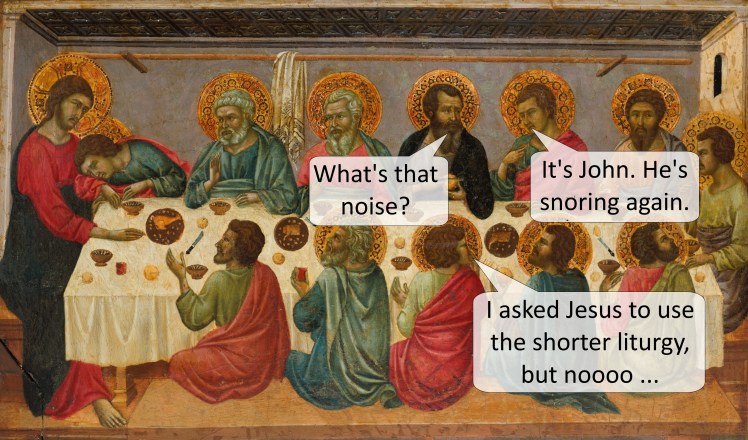Why Use the Reflectionary?
What’s wrong with a Good Old Sermon?

Do you remember back to your school days – those lovely lessons where the teacher stood at the front and talked about irregular verbs, or the structure of a plant cell? No? Me neither. What about the one where you get to chop up an onion and then look at the cells down a microscope and draw it? Yes I remember that one, even though it as a fair old time ago now.
Why do I remember it? Because I did something. It wasn’t just sitting and listening to someone lecture. Lecturing is pretty much the worst means of communication there is, and I should know – I’m a lecturer! And let’s not forget that we are (hopefully) wanting to communicate with those outside the church as well, and unless they’re academics, they’ll not be used to being talked at.
Educationally, a traditional sermon is pretty much the same as a lecture, (but with harder seats and no Student Union bar). It’s passive learning that occupies just one of our senses – we’re simply sitting and listening. It’s only going through one part of our brain, and the words slip easily in and out.
Now, let me assure you of a few things:
- I’m not getting at preachers (and I know that most of you reading this are preachers, so really, I’m not).
- God very often speaks through the faithful preaching of his word, and that is far more important than anything I write here.
- There is one big difference between a sermon and a lecture – the Holy Spirit’s work.
 This last point is worth expanding on. A sermon is not a lecture on ethics and religion because God is there too. If we have open, receptive hearts then God can use pretty much any method for speaking to us, even a donkey! However, this does not mean we should take that as best practice, and I contend that a monologue is not best practice.
This last point is worth expanding on. A sermon is not a lecture on ethics and religion because God is there too. If we have open, receptive hearts then God can use pretty much any method for speaking to us, even a donkey! However, this does not mean we should take that as best practice, and I contend that a monologue is not best practice.
There certainly are monologues in the Bible – Josiah reading ‘all the words of the Book of the Covenant’ for example (that must have been a four-fruit-gum sermon if ever there was one) – but the efficacy of more varied communication is not something we have only recently discovered. I’d be prepared to wager that when Jesus told the parable of the sower there was a path nearby. And some thorny bushes, and a field of wheat. Power Point might not have been around then, but visual aids certainly were. Just ask Moses.
Of course, there’s also the lovely example of Paul talking past midnight in Troas, but that didn’t go without hiccup …
So, how can listeners better engage with the text?
- Writing – Taking notes during a sermon, as one might in a lecture, is a huge help. By thinking what to write and writing it, the message passes through more parts of the brain, and some of the words get caught on the velcro and stay there.
- Seeing / Feeling – Having things to look at, to feel or do help as well; even simply reading out loud is far more effective than reading silently or being read to.
- Talking / Doing – If we discuss what we’ve read or heard, or explain it to someone else, our understanding goes through the roof!
If we actively participate in the learning, we pay attention. But sit and listen, and the words get lost in the void between our ears; our minds wander as our bodies doze.
It’s not the fault of the preacher, it’s more the unimaginative structure of many church services. We don’t have to have a hymn-sandwich-with-a-side-order-of-sermon followed by tea and a custard cremes.
 You’ve probably seen this ‘pyramid of learning’. I’d take the numbers with a large vat of NaCl, but the point remains. Sadly, the traditional sermon tops this chart – and not in a good way. So what can we do about that?
You’ve probably seen this ‘pyramid of learning’. I’d take the numbers with a large vat of NaCl, but the point remains. Sadly, the traditional sermon tops this chart – and not in a good way. So what can we do about that?
Answer – Reflectionary!
People learn in different ways. We’re all a mixture, but some prefer seeing or watching; some learn better by listening; others by doing. Best of all is a smorgasbord of variety. So let’s look at the image, read the Bible text, listen to the reflection, talk about what we’ve heard, do the activity, make our own prayers. Feel free to pick and choose whatever suits the situation.
Try Reflectionary with a youth group, Bible study, men’s breakfast, assembly, CU, cafe church, messy church, cell group, personal devotion and even in regular church – you can always pass the pens and glue along the pews. However you use it, my prayer is that it may draw you nearer to our Awesome and Fabulous Lord.
Enjoy!